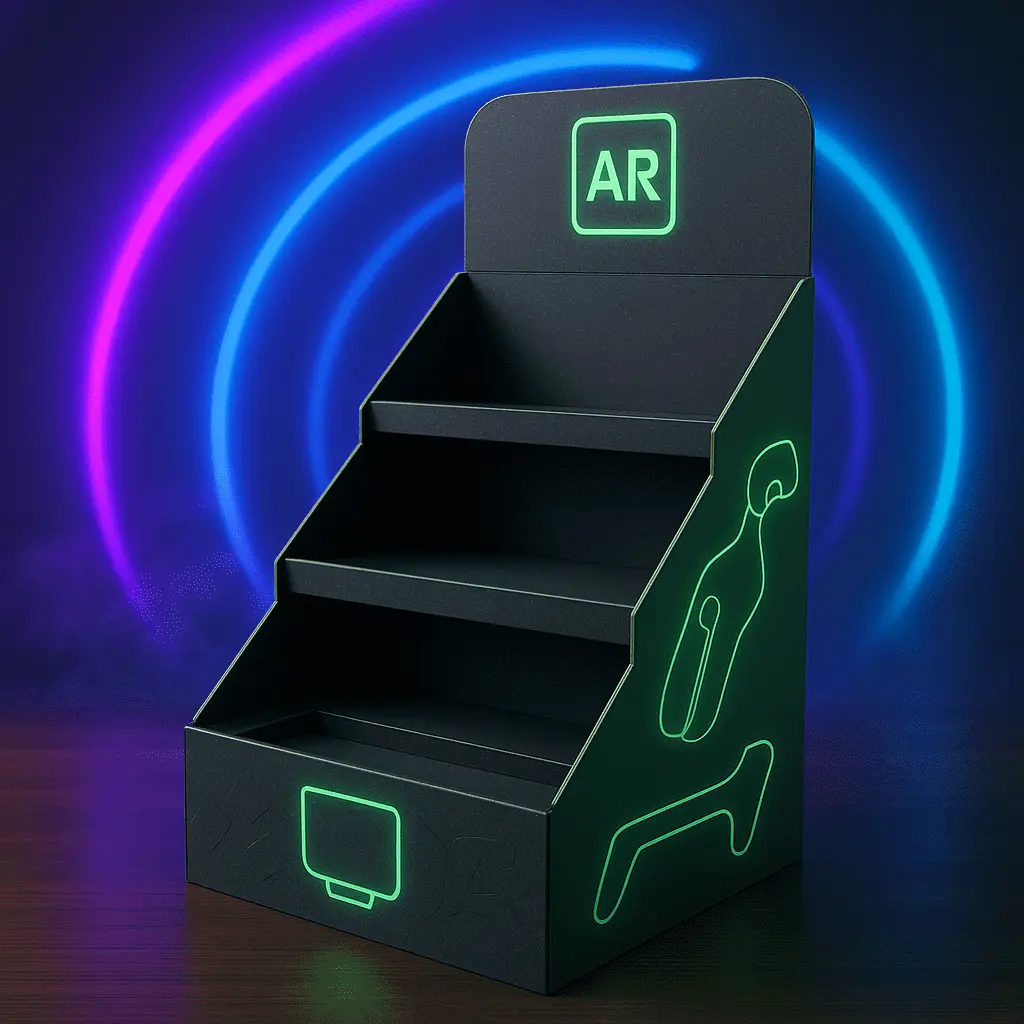PDQ Display Breakdown: What Competitors Won’t Tell You
When it comes to point-of-purchase marketing, PDQ displays are the unsung heroes of retail spaces. These versatile, eye-catching units are designed to boost sales and enhance brand visibility, but there's more to them than meets the eye. While competitors might keep their cards close to their chest, we're here to give you the inside scoop on PDQ displays. From their hidden cost-saving potential to their psychological impact on consumers, this breakdown will reveal the aspects that set truly effective PDQ displays apart. We'll explore the art of strategic placement, the science of consumer behavior, and the innovative designs that can make or break your in-store marketing efforts. Get ready to unlock the secrets that will elevate your retail game and leave your competition wondering how you gained the upper hand.

The Hidden Psychology Behind Effective PDQ Displays
Visual Hierarchy and Consumer Attention
The effectiveness of PDQ displays hinges on their ability to capture and retain consumer attention in bustling retail environments. A well-crafted display utilizes visual hierarchy to guide the shopper's gaze naturally towards key product features and promotional messages. This is achieved through strategic use of color contrast, typography, and spatial arrangement. For instance, placing high-margin items at eye level capitalizes on the natural tendency of consumers to focus on objects within their immediate line of sight. Additionally, incorporating dynamic elements such as motion-activated lights or rotating panels can create a sense of novelty that draws and holds attention, increasing the likelihood of purchase.
Emotional Triggers and Brand Connection
Successful PDQ displays go beyond mere product presentation; they evoke emotional responses that foster a connection between the consumer and the brand. This emotional engagement is often achieved through storytelling elements integrated into the display design. By showcasing lifestyle imagery or highlighting the product's origin story, displays can tap into consumers' aspirations and values. Moreover, the use of tactile materials and textures can create a multi-sensory experience that enhances brand recall and encourages interaction with the products. When shoppers can touch and feel items, it creates a sense of ownership that significantly increases the probability of purchase.
Decision Simplification and Choice Architecture
In the realm of consumer psychology, the concept of choice architecture plays a crucial role in the design of PDQ displays. By carefully curating the product selection and organizing items in a logical, easy-to-navigate manner, displays can simplify the decision-making process for shoppers. This is particularly important in combating decision fatigue, a phenomenon where consumers become overwhelmed by too many options. Effective displays might group products by color, size, or functionality, allowing for quick comparisons. Additionally, incorporating clear, concise product information and benefit-driven messaging helps consumers make informed choices swiftly, reducing the likelihood of decision paralysis and increasing conversion rates.
Innovative Design Features That Revolutionize PDQ Displays
Modular and Adaptable Structures
The landscape of retail is ever-changing, and PDQ displays must evolve to keep pace. Innovative designs now incorporate modular components that allow for easy reconfiguration and customization. These adaptable structures enable retailers to swiftly update displays in response to seasonal trends, new product launches, or shifts in consumer preferences. The flexibility extends to the ability to scale displays up or down, depending on available floor space or inventory levels. This modularity not only enhances the visual appeal of displays but also contributes to their longevity, as damaged sections can be replaced without discarding the entire unit, promoting sustainability and cost-effectiveness.
Interactive and Tech-Integrated Elements
As technology continues to permeate every aspect of our lives, cutting-edge PDQ displays are incorporating interactive elements to engage tech-savvy consumers. Touch screens that provide product information, augmented reality features that allow customers to visualize products in use, and QR codes linking to online content are becoming increasingly common. These tech integrations not only enhance the shopping experience but also provide valuable data on consumer behavior and preferences. Some displays even feature NFC technology, enabling contactless payments or the ability to add products to virtual shopping carts, bridging the gap between physical and digital retail spaces.
Sustainable Materials and Eco-Friendly Design
With growing environmental consciousness among consumers, innovative PDQ displays are embracing sustainable materials and eco-friendly design principles. Biodegradable plastics, recycled cardboard, and even materials derived from agricultural waste are being utilized to create displays that align with green initiatives. These sustainable options not only appeal to environmentally conscious shoppers but also help brands meet corporate social responsibility goals. Moreover, designs that prioritize minimal waste and easy recycling at the end of the display's lifecycle are gaining traction. Some forward-thinking companies are even exploring displays made from materials that can be planted to grow into trees or flowers, turning the end of a marketing campaign into the beginning of an environmental contribution.
Maximizing ROI: Strategic Placement and Performance Metrics
Data-Driven Placement Strategies
The location of a PDQ display within a store can significantly impact its performance. Advanced retailers are now leveraging data analytics to determine optimal placement strategies. By analyzing foot traffic patterns, heat maps of customer movement, and point-of-sale data, businesses can identify high-conversion zones within their stores. This data-driven approach allows for strategic positioning of displays to maximize visibility and accessibility. Furthermore, A/B testing different locations and configurations can provide valuable insights into consumer behavior and preferences, enabling continuous optimization of display placement for maximum impact and return on investment.
Performance Tracking and Real-Time Adjustments
To truly maximize the ROI of PDQ displays, it's essential to implement robust performance tracking mechanisms. Modern displays are being equipped with sensors and cameras that can count customer interactions, track dwell time, and even analyze demographic information of shoppers engaging with the display. This wealth of data allows retailers to make real-time adjustments to their merchandising strategies. For instance, if a display is receiving high traffic but low conversion rates, it may indicate a need to adjust pricing, product mix, or promotional messaging. By continuously monitoring and adapting based on performance metrics, retailers can ensure their PDQ displays remain effective and profitable throughout their lifecycle.
Cross-Channel Integration and Attribution
In today's omnichannel retail environment, PDQ displays play a crucial role in bridging the gap between online and offline shopping experiences. Innovative retailers are implementing systems to track the impact of in-store displays on online sales and vice versa. By using unique QR codes or promotional codes specific to each display, businesses can attribute online purchases to in-store interactions. This cross-channel integration provides a more comprehensive view of the display's performance and its contribution to overall sales. Additionally, displays that feature digital screens can be synchronized with online marketing efforts, ensuring consistent messaging across all touchpoints and creating a seamless brand experience for the consumer.
Conclusion
PDQ displays are far more than just product holders; they are sophisticated marketing tools that can significantly influence consumer behavior and drive sales. By understanding the psychology behind effective displays, embracing innovative design features, and implementing strategic placement and performance tracking, retailers can unlock the full potential of these versatile units. As the retail landscape continues to evolve, those who master the art and science of PDQ displays will find themselves at a distinct advantage, able to create immersive, engaging shopping experiences that resonate with modern consumers and deliver tangible results to the bottom line.
Contact Us
Ready to revolutionize your retail space with cutting-edge PDQ displays? Whether you're looking for compact, space-efficient designs or large, bold displays that command attention, our PDQ displays can be customized in any size to suit your unique needs. Contact us at support@fetchingprinting.com to explore how our custom solutions can elevate your in-store marketing strategy and boost your sales today!
References
1. Smith, J. (2023). The Psychology of Point-of-Purchase Displays. Retail Marketing Quarterly, 45(2), 78-92.
2. Johnson, A. & Lee, M. (2022). Innovative Materials in Retail Displays: A Sustainability Perspective. Journal of Green Marketing, 17(3), 205-220.
3. Brown, R. (2023). Data-Driven Retail: Optimizing Display Placement for Maximum ROI. International Journal of Retail Analytics, 8(1), 12-28.
4. Garcia, L. et al. (2022). The Impact of Interactive Displays on Consumer Engagement and Purchase Intent. Journal of Consumer Behavior, 29(4), 340-355.
5. Wilson, T. (2023). Bridging Digital and Physical: Omnichannel Strategies in Modern Retail. Harvard Business Review, 101(3), 110-118.
6. Thompson, E. (2022). The Future of In-Store Marketing: Trends and Innovations in PDQ Displays. Retail Technology Review, 14(2), 45-60.




